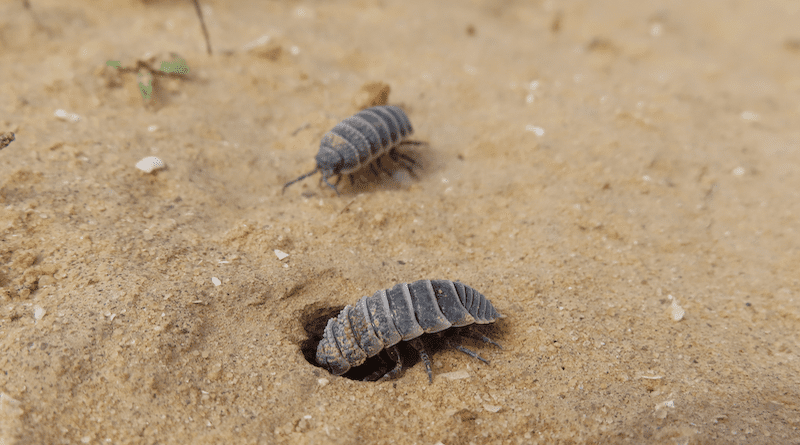Choosing Safe Burrow Sites In A Scary Desert: Lessons From Desert Isopods
In a world filled with potential threats, prey animals often grapple with the challenge of finding secure breeding sites. A recent study, led by ecologists Dr. Viraj Torsekar and Prof. Dror Hawlena from the Department of Ecology, Evolution and Behavior, Hebrew University of Jerusalem, delves into the intricate dynamics of burrow-site selection amidst looming predators.
Focusing on the intriguing behavior of desert isopods (woodlice) in close proximity to scorpion burrows, this research sheds light on how these prey animals make decisions. The study paves the way for a deeper understanding of the intricate ecological interactions between predators and prey, underscoring the significance of examining the subtleties of animal behavior within the delicate balance of nature.
Isopods are vital components of ecosystems, contributing to the decomposition of organic matter in various terrestrial and aquatic environments. This study aimed to investigate whether prey animals lean toward safer breeding sites over riskier ones when presented with a choice. It also explored how the preference for safety might differ among individuals with varying competitive abilities, especially when the costs of competing within their species outweigh the benefits of securing a safer breeding site.
Key findings from the study include:
1. Size Matters: Larger female desert isopods displayed a greater likelihood of occupying burrows, whether situated near or away from scorpion burrows. This underscores the significant role of size in their selection of burrow sites.
2. Safety Matters: Larger females spent more time in safer burrows, emphasizing the their ability to raise their young in a safer environment.
3. Prudent Choice: In contrast, smaller females demonstrated a preference for riskier sites, even in the absence of direct competition. This indicates a prudent choice where the potential benefits of safety may be outweighed by the costs of intraspecific competition.
These findings challenge conventional assumptions about burrow-site selection and underscore the necessity of considering intraspecific competition when investigating how predators influence the behavior of their prey.
Dr. Viraj Torsekar, commented on the research, stating, “Our findings suggest that the landscape of fear, shaped by the presence of predators, influences the behavior of prey animals in intricate ways. It’s not solely about safety; it’s about carefully weighing the costs and benefits of every decision, even when it pertains to fundamental choices like selecting a breeding site.”

